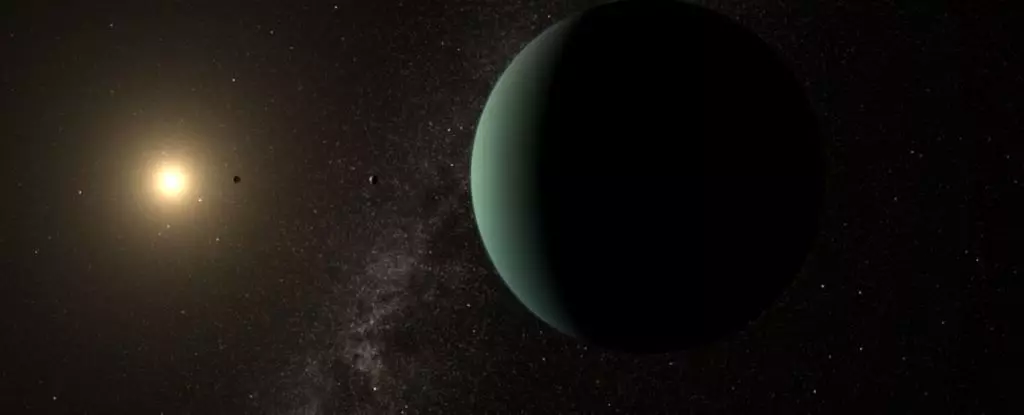The quest for extraterrestrial life has been a relentless pursuit for astronomers, and recent findings suggest that a potentially life-sustaining exoplanet may exist much closer to Earth than previously thought. Astronomers have confirmed the existence of exoplanet HD 20794 d, located around 20 light-years away from our Solar System. This discovery offers a fascinating insight into the conditions that could support life beyond our planet and sheds light on the ongoing exploration of habitable worlds in our galactic neighborhood.
Exoplanet HD 20794 d showcases some significant features that enhance its potential for habitability. With a mass approximately six times that of Earth, the planet resides in a region around its host star where conditions could theoretically allow for liquid water to exist—a crucial element for life as we understand it. The star it orbits is a yellow dwarf, similar to our Sun, albeit slightly smaller and older. This older classification is beneficial, as it suggests that any planets orbiting the star may have had sufficient time to develop stable atmospheres and environments that can support life.
The discovery of HD 20794 d was not straightforward. Initial observations indicated its presence, but confirmation required careful data analysis and additional observations to discern the faint signals suggesting the planet’s existence. Astrophysicist Michael Cretignier from Oxford University highlights the initial uncertainty in confirming the planet’s existence due to the faintness of the original signal. This represents an important point in exoplanet research, demonstrating the need for advanced technologies and methodologies in the ongoing hunt for habitable worlds.
At the core of the investigation into habitable exoplanets lies the concept of the habitable zone, often referred to as the “Goldilocks zone.” This zone is the orbital range around a star where temperatures are just right—not too hot and not too cold—allowing liquid water to remain in a stable state. For HD 20794 d, its orbit, lasting approximately 648 days, places it firmly in this zone, indicating that the conditions may align favorably for the presence of liquid water.
However, it is essential to note that the nature of HD 20794 d’s orbit is elliptical rather than circular. This characteristic introduces variability in the conditions the planet might experience throughout its orbit; during parts of its journey, it travels beyond the habitable zone, potentially subjecting any water present to freezing conditions. Such fluctuations raise critical questions about the planet’s capacity to maintain a consistent climate that could support life.
Despite the promising indications surrounding HD 20794 d, several uncertainties remain. The precise radius of the planet has not been definitively measured, which inhibits accurate calculations of its density and composition. For instance, if the planet features a smaller radius, it might present characteristics akin to a rocky super-Earth. Conversely, a larger radius could suggest a gaseous composition similar to that of a mini-Neptune. These distinctions are crucial, as they would drastically influence the planet’s potential habitability.
Furthermore, the quest for understanding HD 20794 d will require continued observation and technological advancements. Future missions may provide opportunities to gather more data, potentially even imaging the planet directly. As excitement surrounding this exoplanet builds, it also serves as a reminder of the challenges that remain in exoplanet discovery, particularly in the context of defining habitability.
The confirmation of HD 20794 d represents a significant step forward in our exploration of potentially habitable exoplanets. Its proximity to Earth not only excites the scientific community but also enhances the prospects for future space missions aimed at directly studying the planet. As we delve into the complexities of astrobiology and planetary science, discoveries like HD 20794 d remind us of the diverse possibilities for life beyond Earth.
The fascination with these distant worlds is not merely about the search for life; it fundamentally shapes our understanding of the universe and our place within it. Each finding adds layers to our cosmic narrative, igniting curiosity and inspiring the next generation of scientists and explorers. The journey is just beginning, and HD 20794 d may be one of many worlds that beckon us to unravel their secrets.


Leave a Reply